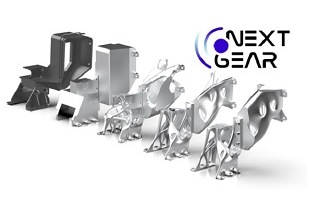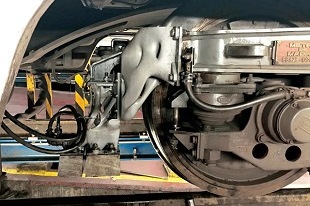
NextGear - NEXT generation methods, concepts and solutions for the design of robust and sustainable running GEAR was concluded in 2022 with success providing several innovative solutions for the railways industry. The project started in late 2019 with 14 partners coming from academia, component manufacturers and end-users of the railway sector. The partners worked on several aspects of the running gear from a global cost model, to smart actuating systems and new materials for producing components for the running gear. MeccPolimi have worked extensively on the different aspects of the project contributing to the realization of some main results of the project. In particular, MeccPolimi researchers have contributed by studying novel additive manufacturing solution for spare parts and the use of composite materials as lightweight solutions in the running gear.
Metal additive manufacturing can have a positive impact on the logistics of spare and repair parts for railways. In NEXTGEAR we have redesigned and manufactured a prototype ATP antenna bracket for the Madrid subway trains using additive manufacturing (AM). The component was topologically optimized by MeccPolimi researchers using acceleration data gathered on the actual trains, improving the safety factor while reducing the total weight by 60%. The new design was produced by laser powder bed fusion (LPBF) incorporating 18 parts to only two and post-processed using a tailored heat treatment. The total production time was less than 2 weeks, which shows the potential of metal AM for reducing the use of resources and improving performances in the railway industry. On 11th January 2022 the new antenna bracket was tested on a Metro Madrid vehicle running on the test track and performed well.
One main objective in the design of modern railway vehicles is mass reduction and the reduction of the damage generated to the infrastructure. In this regard, reducing the mass of the wheelsets is of paramount importance as the un-sprung masses are directly in contact with the track and hence are responsible for increased stresses in the rails and in other track components. The “wheelset of the future” workpackage, led by MeccPolimi, aimed at defining a technology concept and a complete set of functional specifications for a wheelset with a hybrid metallic composite (HMC) axle. The solution researched in the project is an axle for an inboard bearing trailer wheelset for use in metro vehicles. The HMC (Hybrid Metallic-Composite) axle concept was investigated in respect of a number of interrelated technical issues, including the structural design and the optimization of fibre layup, the design of composite-to-metallic adhesive joints to provide suitable interfaces to the wheels, the identification of techniques for non-destructive testing and structural health monitoring of the HMC axle, the effect of impact with ballast stones, the manufacturing methods, with a focus on the optimization of the pattern for filament winding of fibres, the vibro-acoustics of the wheelset with HMC axle.
Within the project several other exciting concepts were investigated and demonstrated, including a frame for a two-axle vehicle made of carbon fiber reinforced polymeric composite material, and an active vibration control system with a dedicated actuator. After conclusion of the project, several relevant impacts of the project continue to emerge as some of the demonstrated technologies will be included in the Shift2Rail Catalogue of Solutions and showcased in InnoTrans 2022 trade fair for rail transport technology, which will be held in Berlin, in September 2022.



